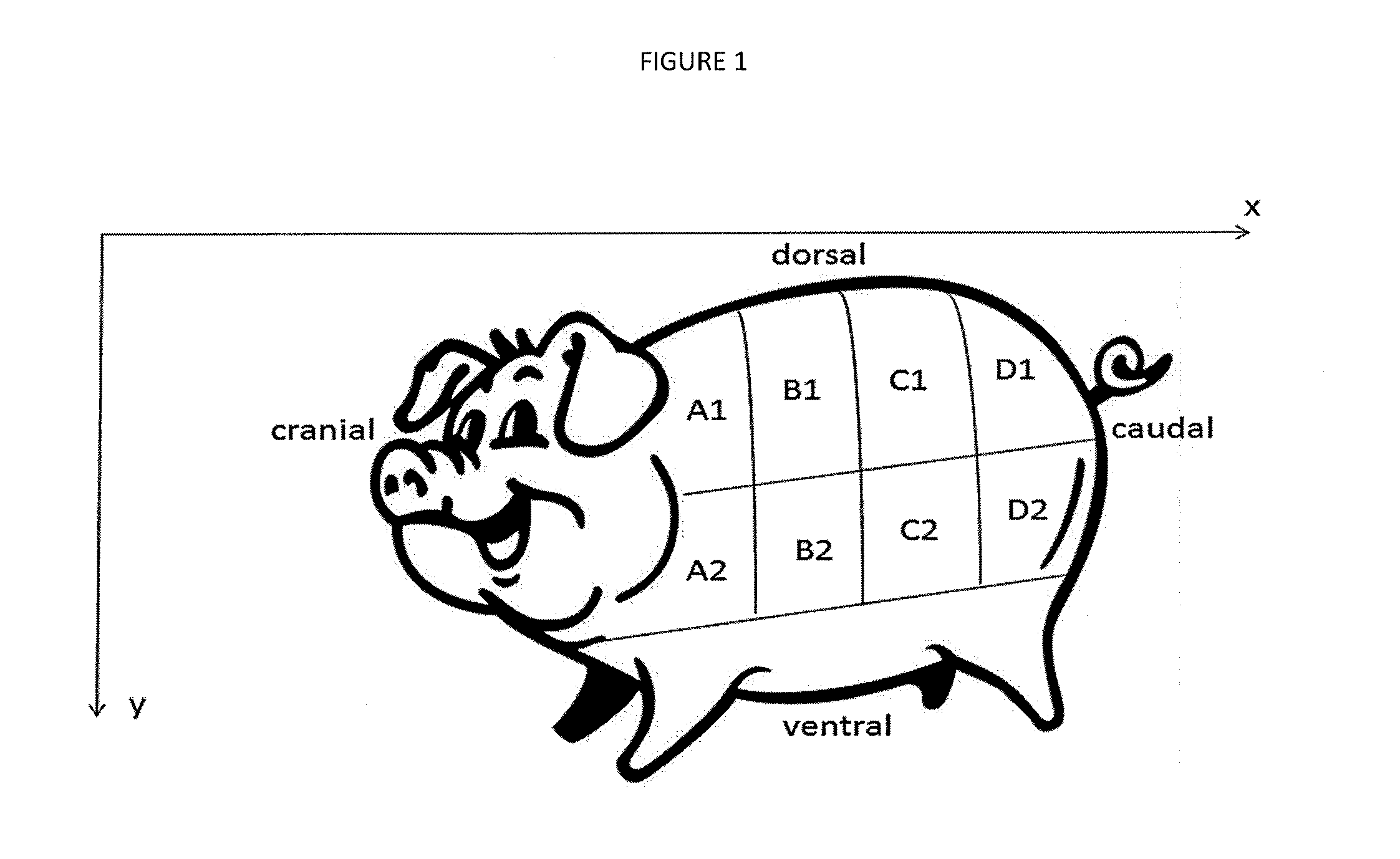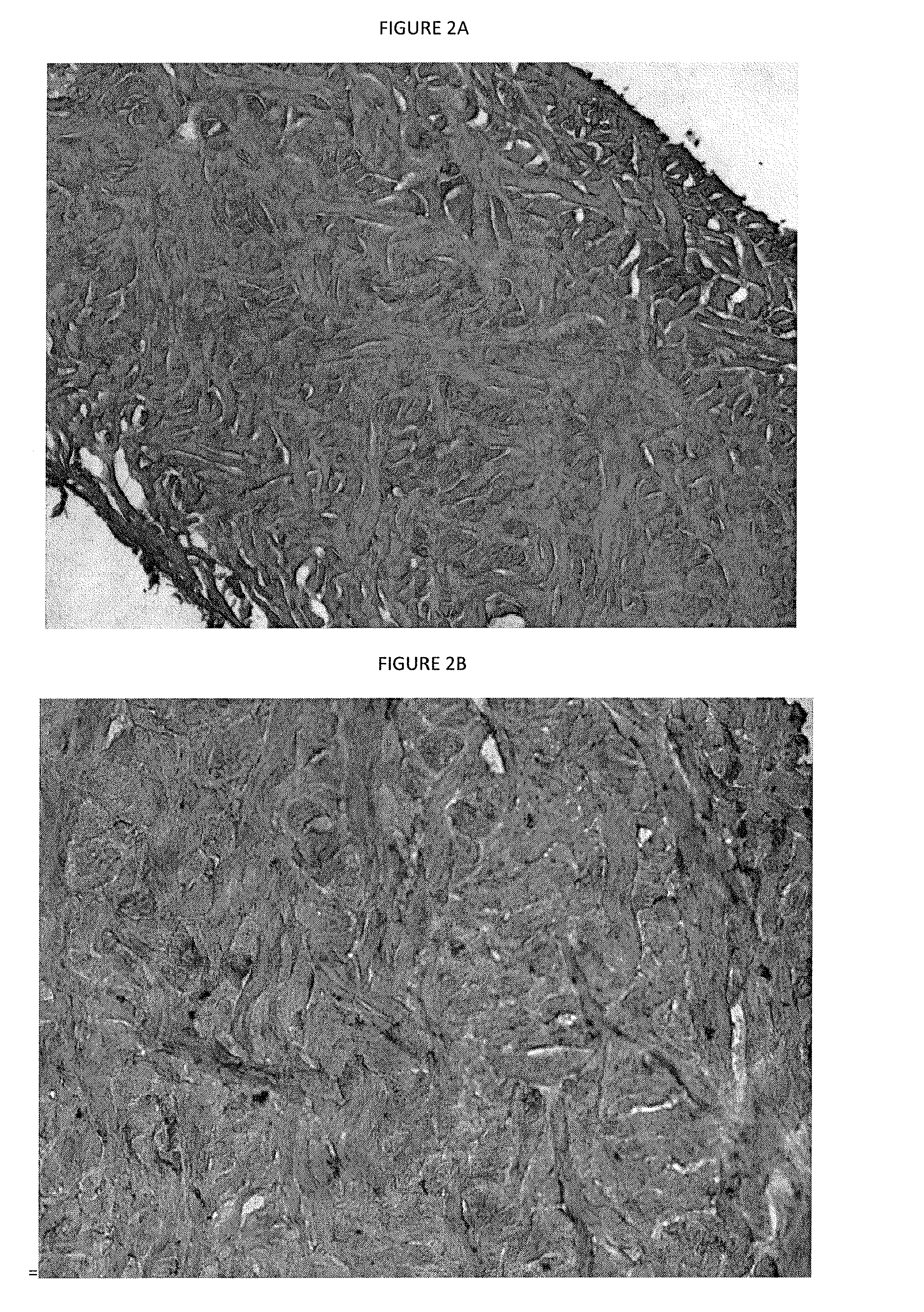Xenograft soft tissue implants and methods of making
a soft tissue implant and xenograft technology, applied in the field of biological tissue implants and biological tissue implant processing, can solve the problems of large variability of allograft options, high cost, and inability to meet patient needs, and achieve the effect of removing or substantially reducing hair and hair follicles
- Summary
- Abstract
- Description
- Claims
- Application Information
AI Technical Summary
Benefits of technology
Problems solved by technology
Method used
Image
Examples
example 1
Processing Porcine Dermis
[0057]Porcine dermis samples were processed for evaluation. The process for preparing these samples involves hair removal, hypo / hyperosmotic soaks, hydrogen peroxide, solvent dehydration, and oven drying.
[0058]Specific processing of these grafts included storage in 26% NaCl, hair removal with a sodium sulfide / sodium hydroxide (H2O2) mixture, multiple hypo / hyperosmotic soaks (utilizing NaCl solutions and water), hydrogen peroxide treatment, and then solvent dehydration using acetone, and oven drying at 37° C.
[0059]Histological examination of these processed porcine dermal inferior samples was performed, see FIG. 2. FIG. 2A shows H&E stained tissue with 50× magnification and frozen cryostat sectioning. FIG. 2B shows Alcian Blue stained tissue with 100× magnification and frozen cryostat sectioning.
[0060]Histological evaluation of the Hematoxylin and eosin (H&E) sections of the processed porcine dermal tissue showed an open porous matrix, see FIG. 2. This archit...
example 2
Rat Model Study
[0061]Grafts made by a process of the application were studied in a rat model. A sham procedure was used as a control in this study. Sprague-Dawley rats received a unilateral defect, which was repaired with either primary closure or an implanted graft. This study evaluated in vivo cellular infiltration, neovascularization, encapsulation, hematoma / seroma formation, tissue remodeling, and biomechanics at 4- and 8-week sacrifice intervals. This study also evaluated un-implanted graft histology, biomechanics, and tissue degradation properties.
[0062]Sprague-Dawley rats were selected based on availability, limited testing expense, and the immune competency of these rats. Sprague-Dawley rats have been used in various other studies with processed soft tissues i.e., human dermis, with positive results. These studies included bilateral defect models and bilateral subcutaneous models. The linea alba defect site was used in the current study to mimic existing literature [1-5].
[00...
PUM
 Login to View More
Login to View More Abstract
Description
Claims
Application Information
 Login to View More
Login to View More - R&D
- Intellectual Property
- Life Sciences
- Materials
- Tech Scout
- Unparalleled Data Quality
- Higher Quality Content
- 60% Fewer Hallucinations
Browse by: Latest US Patents, China's latest patents, Technical Efficacy Thesaurus, Application Domain, Technology Topic, Popular Technical Reports.
© 2025 PatSnap. All rights reserved.Legal|Privacy policy|Modern Slavery Act Transparency Statement|Sitemap|About US| Contact US: help@patsnap.com


